by Steve Rockwell
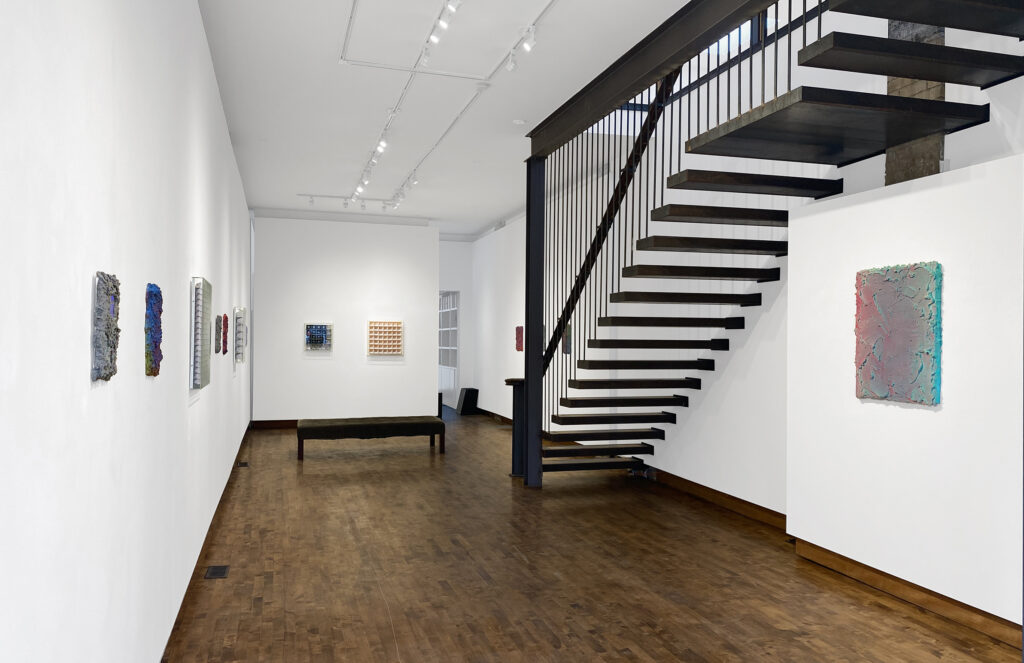
A way to describe the exhibition of work at the Lonsdale Gallery in Toronto featuring Andrew Ooi and Tyler Matheson might be a study in two-point perspective. The viewer will tend to structure the gallery’s “A matter of Perspective” show around a common focal point. If Matheson speaks to the individual and their private journey of discovery, then Ooi addresses society in a holistic sense. Nevertheless, both artists in their own way arrive at a cosmology.
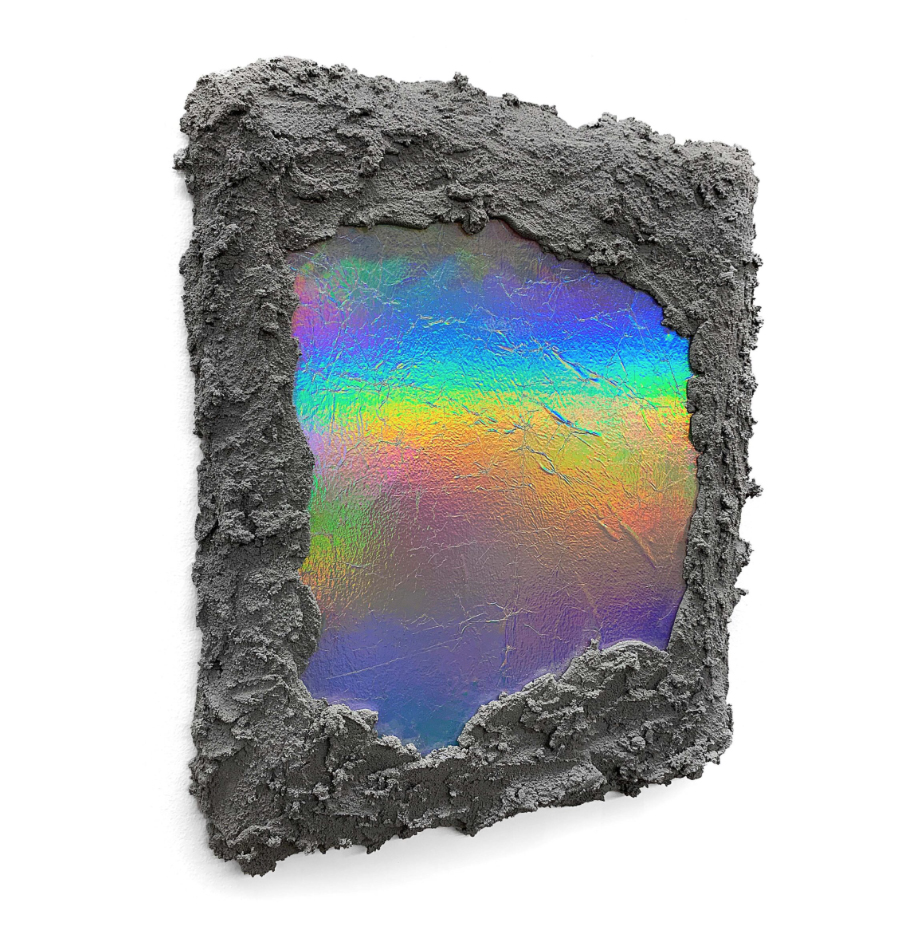
The “Oblivion” half of Matheson’s contribution grapples with image and identity of the self in a game of hide-and-seek. There is a sense that the thickly troweled grout elements are engaged in a chase with the reflective looking glass portions of the canvas, motivated somehow by a wish to bury any fugitive reflection, thereby extinguishing or annihilating them. These iridescent islands themselves are effectively a pulverization of the familiar seven colours of the rainbow. Is it this threat of entombment to which the “Oblivion” titles refer?
The tiling grout in Matheson’s “Parallax” series is devoid of reflective properties, but possesses an iridescence that appears to have transitioned or migrated from the “Oblivion” works. The formerly lifeless grey concrete breathes iridescence, a beneficiary of the now departed reflected self. I read this dynamic of pitching one medium against another as a measured psycho drama, not different in kind to the musings of Shakespeare’s Hamlet in the soliloquy, “To be, or not to be,” apprehensive as the prince was about “the sleep of death” and “what dreams may come” in its wake.
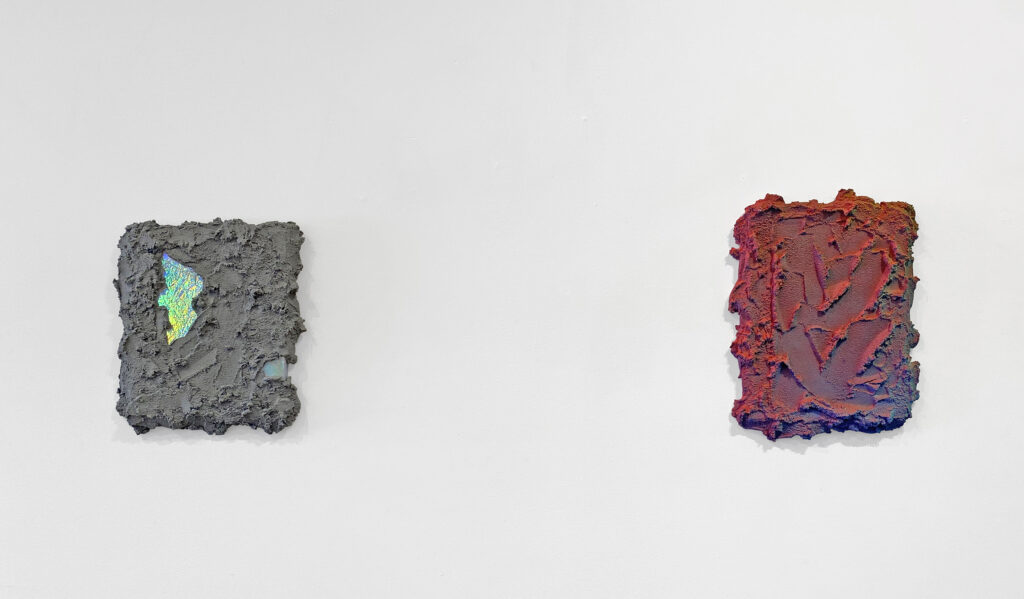
Playing one line of sight against another is the optical law described by “parallax,” the everyday feature of vision that allows for depth-perception. Astronomers use its principles to measure relative distances between planets and stars. “Parallax” brings us to the doorstep of cosmology, the signifier through which our convergent lines of perspective must necessarily pass. Grinding out the etymological derivatives of cosmology furnishes us with enough links to deliver the universe and its order down to the level of the individual self with the words: cosmic, cosmos, cosmopolitan, and cosmetics.
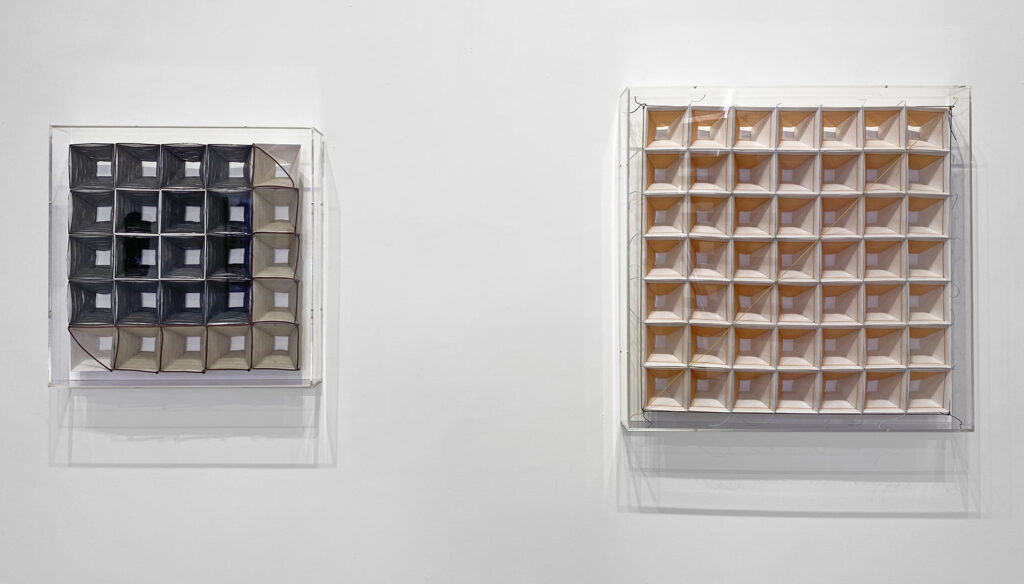
Ooi’s meticulously obsessive art is a blueprint for something much larger than the less than two by two-foot paper constructions in the “A Matter of Perspective” exhibition. The artist introduces the notion of scale with his titles without delivering their literal specifications as architects might do in their plans. Each Gampi paper cube, one of 49 in “Scale 2” for instance, is a unit of time and space within which the artist has, in some respects, inhabited quite literally. “Scale 2” is a compressed set of ordered forms that viewers may magnify to an indeterminate size through their imagination, much like the film projection to a screen of a film strip.
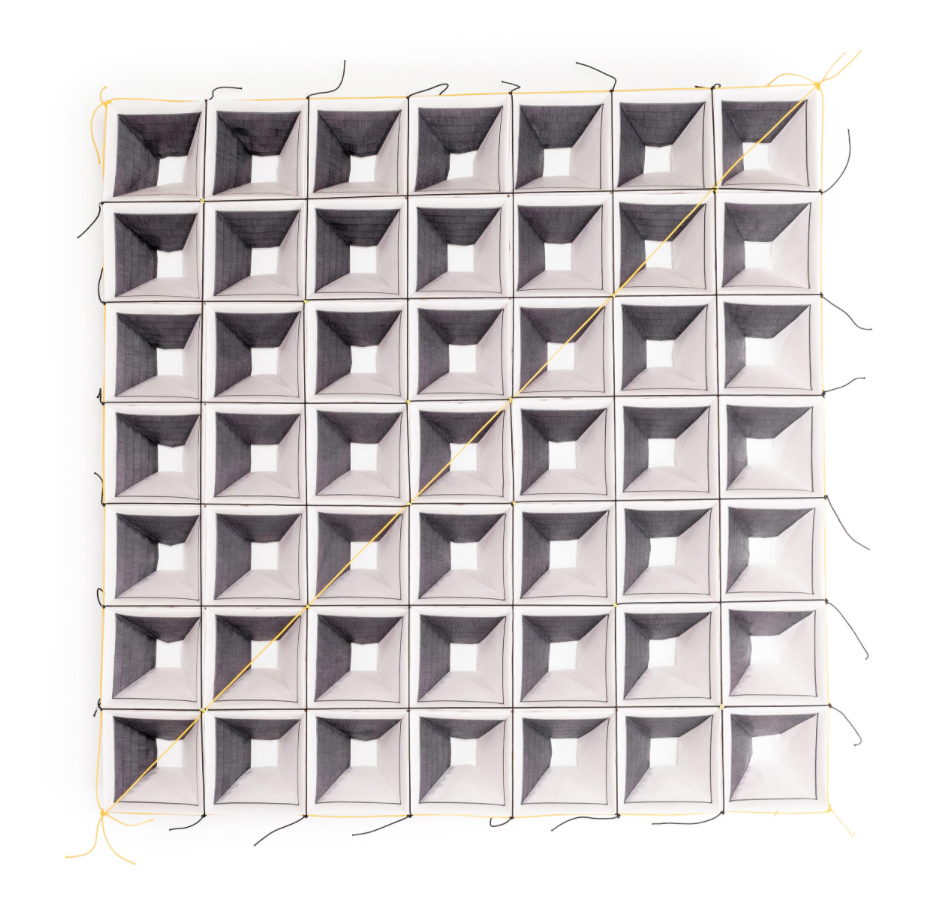
Similarly, the seven by seven cube composition stands in for the 49 days that a wall calendar of seven weeks might represent – a way of storing time spent, and now made visible in the intricacy of its fabrication. As Gampi paper is used in paper screens, windows, and lanterns, its particular sheen and lustre, the 49 cubes serve to sift and reflect their light energy, the ambient illumination displaying the inherent beauty of a Japanese paper perfected over the centuries.
It is in the making of Ooi’s “Scale” series of art that the finer tissues of meaning are revealed. Ooi’s “anthropology” is holistic in the purest sense – the parts of a whole are intimately interconnected, to the extent that the cubes of its composition are knotted together with cords. In that respect each “Scale” work is a living skeleton held back from potential fragmentation by its sinews, no single cube being independent from the next. This perspective applies broadly to the human condition in that the individual within society interpenetrate their environment, each playing an essential role towards a harmony within the whole. Whether we like or not, each of us are mountaineers roped together.
Matheson and Ooi, as it might be said of artists generally, address life energy, and how we choose to expend it. Steppenwolf in their “Born to Be Wild” song saw it as “Fire all your guns at once and explode into space.” The boosters of many of our life rockets may already have been spent. As capsules begin their descent, as it did at the launch, their countdown is meted out in seconds. Light years may, of course, separate the landing at a point, somewhere between Oblivion and Kingdom Come.
A Matter of Perspective continues through August 13, 2022. Lonsdale Gallery, 410 Spadina Road, Toronto, Ontario, Canada M5P 2W2. info@lonsdalegallery.com www.lonsdalegallery.com
